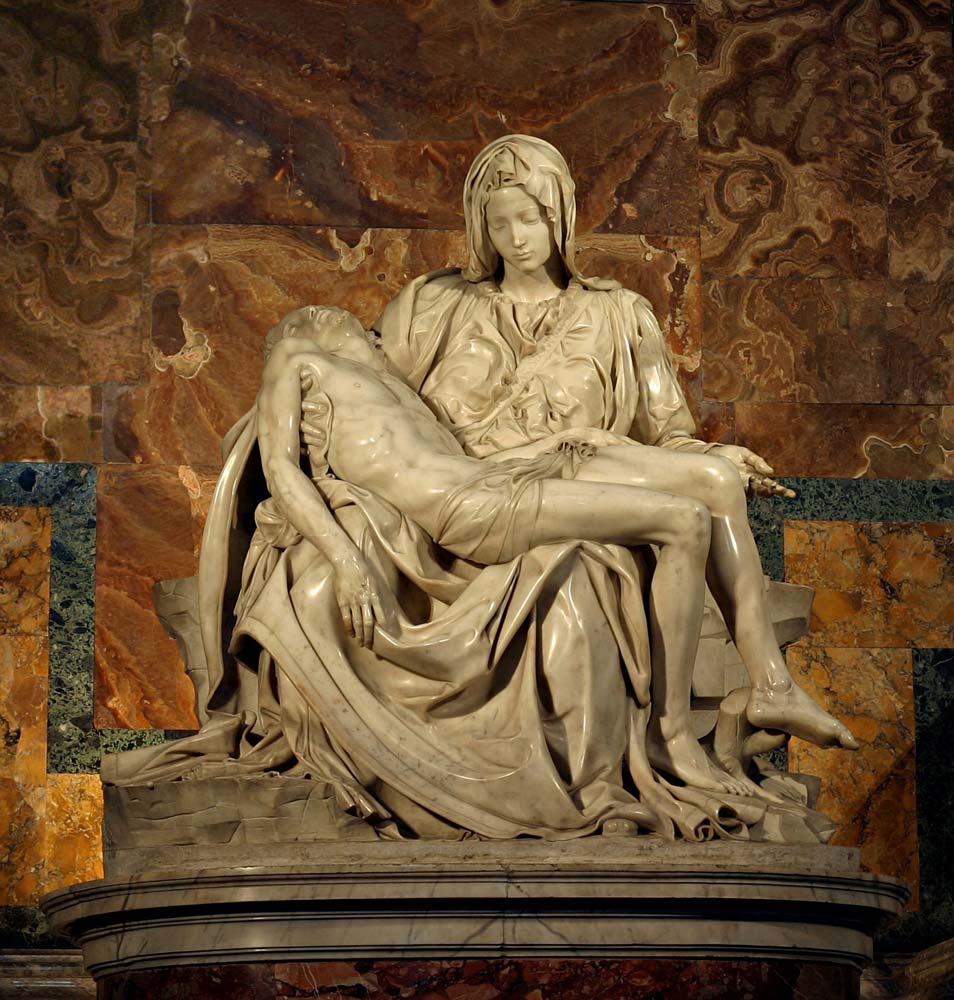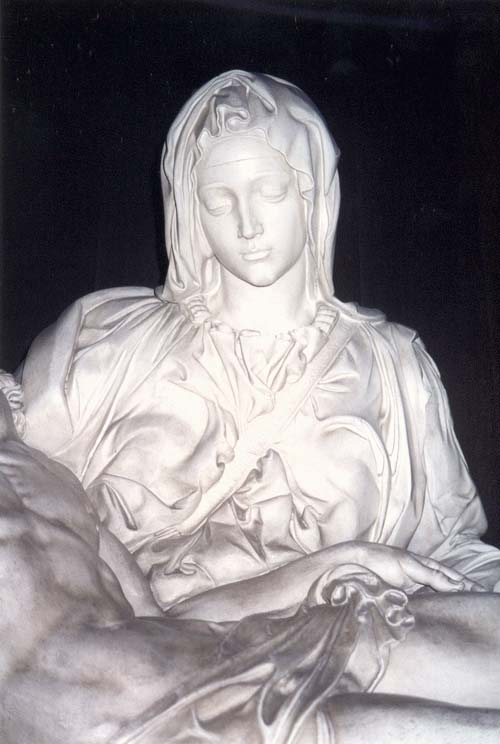| Pietà | |
|---|---|
 |
|
| Artist | Michelangelo |
| Year | 1498–1499 |
| Medium | Marble |
| Location | St. Peter’s Basilica, Vatican City |
| Dimensions | 68.5 in × 76.8 in |
| 174 cm × 195 cm | |
The Pietà is regarded as one of the greatest works of the Renaissance artist Michelangelo Buonarroti. This impressive sculpture is currently placed in Vatican City, at St. Peter’s Basilica. The Pietà is among the initial works of art of the similar theme made by the artist. Cardinal Jean de Billheres commissioned the statue, and this nobleman was a previous representative in Rome. The statue, which was in Carrara marble, was created to the funeral monument of the cardinal, yet it was relocated at St. Peter’s Basilica during the 18th century. It was also the only artwork by Michelangelo that was signed by the artist himself.
Description of the Sculpture
This exquisite work of art by Michelangelo features the body of Jesus placed on the lap of the Virgin Mary after the savior’s crucifixion. Its theme was based on Northern origin that was widely applied in France, yet not so popular in Italy. The artist’s interpretation of the sculpture is unique and rather extraordinary to the precedents. Moreover, this masterpiece is a magnificent work because it balances the ideal of the Renaissance Era with classical beauty evident in naturalism.
The structure of the Pietà is quite pyramidal with the vertex coinciding with the Virgin’s head. Then, the figure widens in a progressive manner, down towards the drapery and ends of Mary’s dress, and up to the rock of Golgotha, which was the base of the sculpture. The characters also appear to be out of proportion because of the challenges in depicting a man’s body being cradled in a woman’s lap. With Mary’s monumental drapery, much of her body is hidden, and the evident relationship between these two characters seemed natural.
The face of Jesus in this sculpture does not show any signs of his suffering. It was the artist’s intention to create an image that shows the serene face and vision of abandonment in Jesus. Hence, the sculpture presented a deep communion between the man and Almighty God through Christ’s sanctification.
Interpretations of the Masterpiece
 In this sculpture, the Virgin Mary is presented as a young woman, which is rather different form the other versions. For instance, her youth is a symbol of her purity, although some people believe that it is quite strange how she can appear young despite her age and physical maturity.
In this sculpture, the Virgin Mary is presented as a young woman, which is rather different form the other versions. For instance, her youth is a symbol of her purity, although some people believe that it is quite strange how she can appear young despite her age and physical maturity.
Other scholars argue that the viewer of this statue is indeed looking at the serene image of Mary as she holds the child Jesus. Furthermore, the youthful appearance and features of Mary is coupled with the delicate position of her arms that could suggest the fact that she is cradling her child while the viewer sees the future of Christ in this image.
The entire process of completing the sculpture took only over a year. At present, the statue is situated at the Santa Petronilla Chapel, which was a Roman mausoleum located near St. Peter’s Basilica’s south transept. Eventually, the chapel was demolished when the basilica was rebuilt. According to historians, most visitors at the chapel assumed that the statue was the work of another artist in spite of the fact that Michelangelo’s signature was seen on the sculpture. This signature seems to copy the ones used by Polykleitos and Apelles, who were famous artists in Ancient Greece. However, such anecdotes about the statue caused Michelangelo to regret his decision of signing the artwork. Hence, he vowed never again to sign any of his masterpieces.
During the following years, the Pietà by Michelangelo sustained severe damages. In fact, the four of Mary’s fingers on her left hand were broken when the statue was relocated to the basilica. However, Giuseppe Lirioni restored this famous artwork. Some scholars, on the other hand, commented that the restorer seemed to have made the gesture quite rhetorical.
After the statue was restored to its remarkable appearance, it was once again damaged on the Pentecost Sunday of 1972. It was during this time when Laszlo Toth, who was a mentally-ill geologist, stormed into the chapel, and forcefully attacked the artwork with his hammer. As he carried out this frightful act, he kept shouting and claiming that he was Jesus Christ. Several onlookers took most of the statue’s pieces that flew off due to this dreadful act. Some of the pieces were eventually returned, although others needed to be reconstructed because of severe damages.